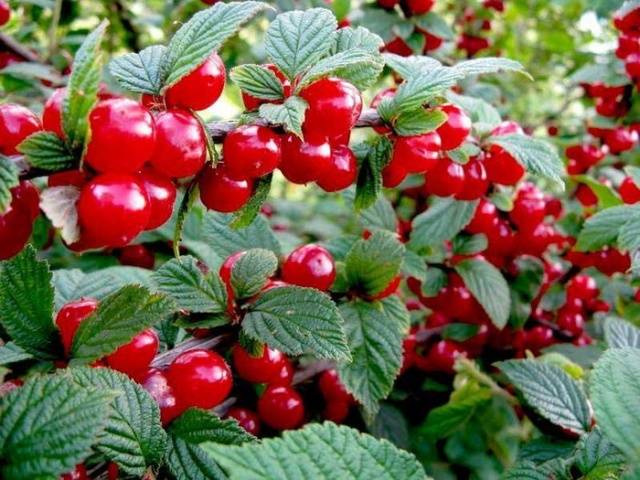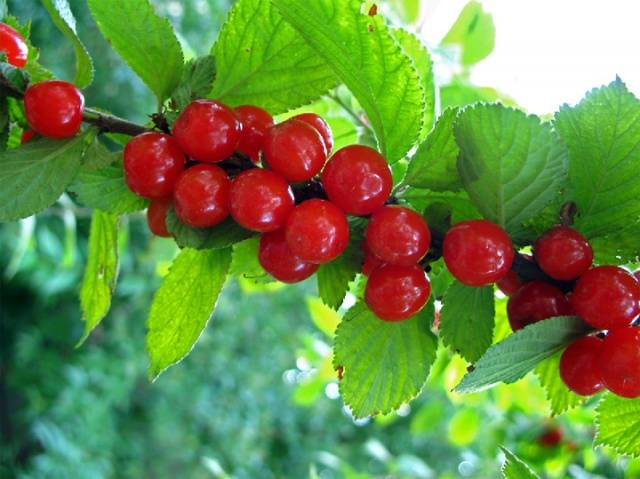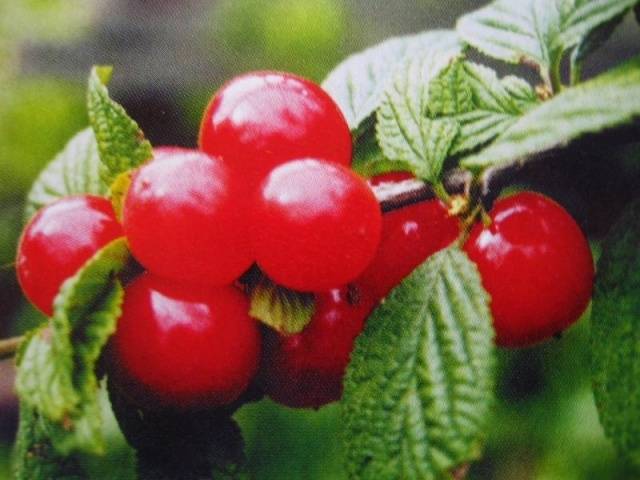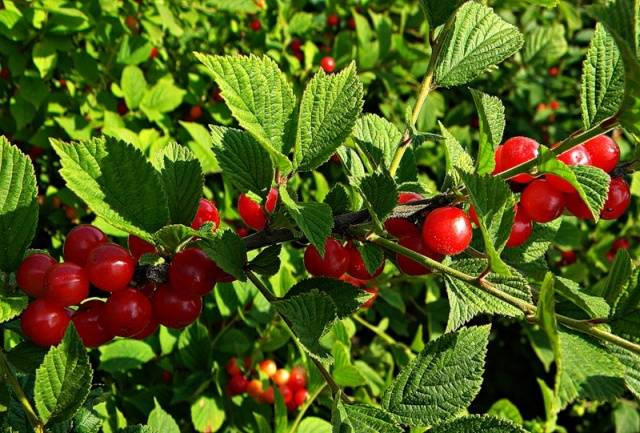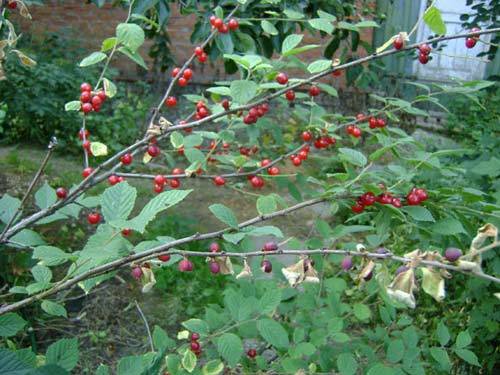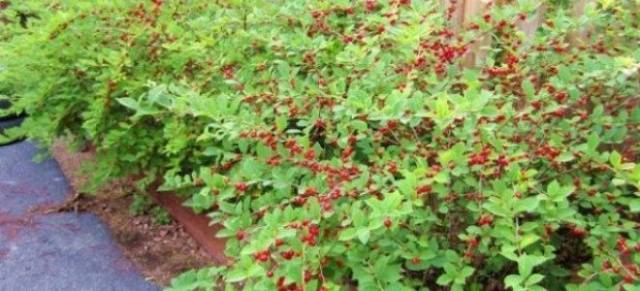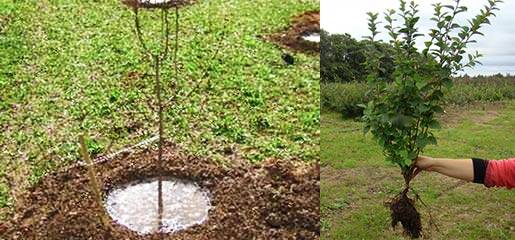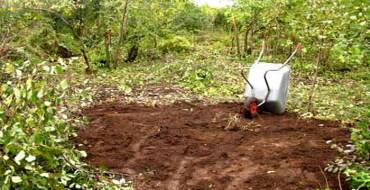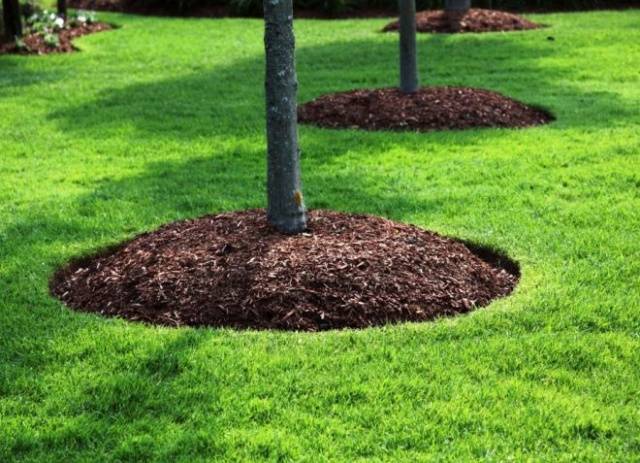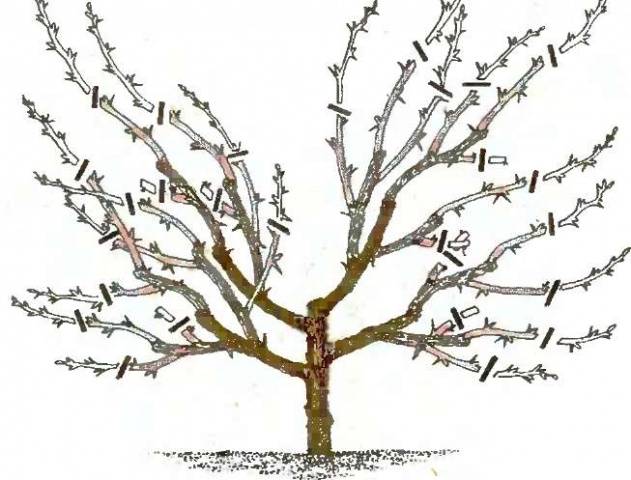Content
Felted cherry came to us from southeast Asia. Through selection, varieties of this culture were created that are able to exist and give a crop where ordinary cherries simply cannot grow. Among them is the Skazka variety.
Breeding history
The Far Eastern experimental station VNIIR is famous for its varieties of felt cherries. About 20 of them were bred thanks to the efforts of breeders Vera Petrovna Tsarenko and Natalia Albertovna Tsarenko. One of them is Felt Cherry Fairy Tale. When breeding, the variety was used Summer, whose flowers were pollinated with a mixture of pollen from seedlings Rosova and Krasnaya variety.
The Skazka variety got into the State Register at the same time as many other varieties of Tsarenko's selection - in 1999.The authors believe that it is capable of growing throughout Russia, especially since in different regions the reviews about the Skazka felt cherry are positive.
Description of culture
Felt cherry Tale grows in the form of a low bush - no more than 1.3 m. The shape of the crown is oval, it is not very thickened. Young cherry shoots of this variety are brown and pubescent, while older ones are gray with flaky bark. Light lentils are noticeable on them in abundance. In each axil of a cherry leaf, three small pointed buds are formed, and the vegetative one is only medium, the rest will work for the harvest.
Sheet
The leaves of this cherry variety have the shape of an elongated oval, they are corrugated, dark green in color, the top and base are pointed. The edge of the leaf is double-clawed. If its underside is covered with a small amount of hairs, then on the front side the pubescence looks like a felt. It is this feature that gave the name to this type of cherry. The petiole of this cherry variety has 2 linear stipules, it is very short.
Flower
The flower of the Fairy Tale is medium-sized and saucer-shaped. The corolla is composed of five petals, they touch. Their color is pink. In each flower, except for the pistil, there are 25 stamens, which are shorter than it. The calyx of this variety has a cylindrical shape and has a strong anthocyanin coloration and pubescence.
Fetus
Berries near felt cherry Fairy tale rather big, can reach a mass of 3.5 g. Berries are elongated-oval, have a rounded base and the same tip. The stalk has a deep funnel. The color of the cherry berries of this variety is rich burgundy, and the cartilaginous pulp, saturated with juice, is red. The stone is very small and is not capable of separating from the pulp.
Cherry berries are sweet with a pleasant sourness, contain less than 1% acids, and slightly more than 7% sugars, for which they received a tasting score of 3.8 points. They have a high content of ascorbic acid for cherries - 24 mg for every 100 g of pulp.
Characteristics
Every gardener, when planning to plant a tree, first of all pays attention to the characteristics of the variety. Based on it, he determines whether it can exist in his garden. In accordance with it, the optimal growing conditions are selected. Characteristics of the Skazka felt cherry variety will help answer all your questions.
Drought resistance, winter hardiness
Both of these qualities in cherry Skazka are at their best. It exists well in conditions of lack of water and is perfectly adapted not only to winter frosts, but also to drying out by the wind and to sudden thaws.
Pollination, flowering period and ripening times
This variety is unable to pollinate on its own. It is not pollinated by sweet and common cherries. Felt cherry pollinators Fairy Tale - Alice, Vostochnaya, Jubilee. They bloom at the same time - in the third decade of May. Berries ripen at the Skazka cherries at the same time, starting from mid-July. The originator of the variety does not recommend overexposing them on the tree so that they remain cartilaginous.
Productivity, fruiting
Although the bush of this cherry variety is small, it gives a generous harvest. 10 kg per plant for such a baby is very good. Like all trees of this species, the Skazka variety is very fast-growing. Grafted on a stock, it produces berries in the second year, self-rooted plants in the fourth.
Scope of berries
Delicious and beautiful dark berries are good not only as a dessert, but also in any preparation. The wine is also excellent.
Disease and pest resistance
The tough, pubescent cherry leaves of this variety are too tough for most pests. Only rodents annoy her. But it is easy to defend against them. With diseases it is more difficult: the Tale does not suffer from coccomycosis, it is quite resistant to clasterosporium disease, but it can suffer from moniliosis.
Advantages and disadvantages
The main advantage of any garden culture is its fruits. They are very tasty in Skazka cherries. Berries are able to hang on the bush for a long time and not crumble. Her yield is also beyond praise. Excellent winter hardiness, the ability to tolerate dry periods without problems makes this variety very popular.
There are few disadvantages of Tale cherries:
- when the crop is overloaded, the fruits may shrink;
- it is necessary to carry out preventive treatments for moniliosis.
Landing features
Correct planting and caring for felt cherries A fairy tale determines the entire future life of a plant, so you need to consider this event thoughtfully.
Recommended timing
They depend on which cherry sapling of the Fairy Tale variety is chosen. If grown in a pot, felt cherries can be planted from spring to fall. There are restrictions for planting cherry bushes with open roots. It is possible only before the beginning of the growing season - in the spring and after its end - in the fall.
Choosing the right place
The originator of the variety, Professor Vera Petrovna Tsarenko, recommends choosing not steep slopes oriented to the south or southwest for the Skazka cherry variety. The landing site must meet the following conditions:
- well lit and ventilated;
- protection from the north winds will be required.
You can not plant the felt cherry Skazka in low places and where the groundwater is high. It grows best on well-structured loams or sandy loams with a high humus content. This crop prefers a neutral soil reaction. Cultivation of Felt Cherry Skazka in acidic soil is possible only after liming it.
What crops can and cannot be planted next to cherries
In order for the tree to be well lit, and without this good harvest, you cannot get it, the neighbors should not shade it.
But with mountain ash, grapes, hawthorn, she gets along well. Cherries or sweet cherries can become quite good neighbors, but one must always remember about the common diseases of these crops.
Selection and preparation of planting material
In order not to be mistaken and not to get a "pig in a poke", it is better to buy planting material for Skazka cherries in a nursery with a good reputation, it will be useful to require a quality certificate. A felt cherry seedling must meet the following conditions:
- in spring - not swollen buds, in autumn - already fallen leaves;
- the age of the tree is from 1 to 2 years;
- the stem is intact, the bark is alive and resilient;
- the roots are well developed with no signs of decay.
Landing algorithm
The procedure for planting felt cherries is not difficult. It begins with the preparation of the site, for each square meter of which they bring in:
- up to 3 buckets of any organic matter, except for fresh manure;
- about 800 g of lime if the soils are acidic;
- phosphorus-containing fertilizers - up to 60 g;
- potassium sulfate - up to 30.
Landing order:
- digging a hole 50x60 cm;
- we prepare fertile soil, filling it into a pit in the form of a mound. When planting in spring, most of the nutrients should be at the bottom and in the middle of the pit, they will be needed by the cherry tree immediately after the start of the growing season. In the autumn, we concentrate them in the upper layer, the seedling can use them only in the spring, the melt water will bring nutrition to the roots.
- we install the tree, straightening its roots well, and fill them with fertile soil, we do not deepen the root collar;
- lightly tamp the trunk circle;
- watering - you need one or two buckets of water, the amount depends on the moisture content of the soil;
- so that it does not dry out longer, mulching with any organic material is needed, but aged peat is preferable.
Follow-up care of the culture
Cherry varieties Skazka are quite unpretentious. She needs regular watering only immediately after planting and during prolonged drought. You can feed the tree twice a season:
- after the end of flowering, a bucket of humus or compost, 70 g of superphosphate, 20 g of potassium sulfate, 30 g of nitrogen fertilizer are introduced into the trunk circle;
- to prepare for winter in September, you will need potash and phosphorus fertilizers.
To prevent the soil from souring, it is limed every five years.
Timely pruning is very important for the Skazka variety. Like all felt cherries, it does not live longer than 17 years. Anti-aging pruning will help prolong the life of the tree. It is done every 5 years, lightening the center of the crown and thinning out the skeletal branches located on the periphery.
Annual pruning is carried out until the buds swell, leaving no more than 12 strong shoots. If the summer growth is very large, the branches are shortened, leaving two-thirds of the length.
Diseases and pests, methods of control and prevention
There are not many of them, but you still need to fight them. Most often, the causative agents of fungal diseases attack the Fairy Tale.
Disease | Signs | How to treat | Prevention measures |
Moniliosis | Leaves and flowers begin to wither, branches dry up | Sick shoots are cut to healthy tissue, each time disinfecting the cutting tool, sprayed with a 1% solution of foundationol | Do not thicken the crown, provide ventilation |
Pocket disease | Fruits are seedless, look like elongated sacs | Removal of affected parts of the tree, treatment with systemic fungicides | the right place for planting, timely pruning, spraying with copper-containing preparations |
So that rodents, and other pests of the Skazka variety, usually do not happen, do not damage the tree trunk, its lower part is hidden for the winter under a net. Poison is laid out for mice.
The video will tell you about the features of care and diseases of the felt cherry:
Reproduction of felt cherries
When breeding by bones, the offspring will be worse than the parents.Vegetative propagation of felt cherries Fairy tale - cuttings are the most simple and reliable. Cuttings are cut from the top of the shoots when the first berries begin to color.
Conclusion
Felt cherry varieties Skazka are an excellent choice for those who want to get not only delicious berries, but also a tree that does not require special care. Not only fruits are valuable, the Tale can become a spectacular element of landscape design both during flowering and when berries ripen.
